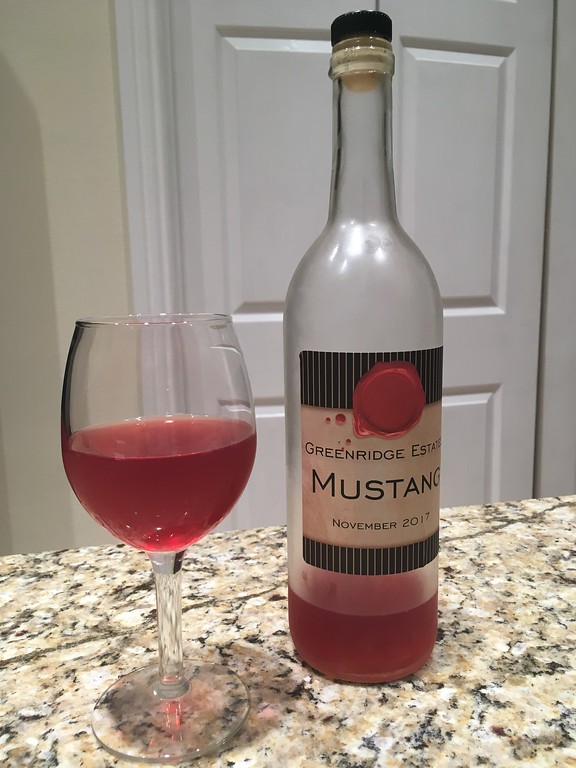- Joined
- Jan 19, 2018
- Messages
- 314
- Reaction score
- 76
Last year we tried our hand at making wine and although tart, was certainly drinkable. I hope this year I've learned more about what I'm doing and how to make the 2018 batch better than last year.
This year was a good year for the Muscadines. A wild grape with an uber-tart skin, their acid level is quite high to begin with. So it takes a lot of water to get the acid/ph down to .65%. Last year I used a dropper/drops testing kit and had a hard time seeing the difference in color change. This year I have a little handy ph digital tester so we'll see how that goes.
We've got about 100lbs of cleaned de-stemmed grapes which were harvested yesterday. My plan is to do the following:
1. Press the grapes to extract the juice
2. Add enough water to bring the ph to .65%
3. Add sugar to bring the SG to 1.100
4. Add the must to the straining bag and float that in my primary and sit 24 hours
5. Pitch the yeast, stir daily checking SG
6. When my ferment reaches 1.3SG I'll rack this off to my secondary glass carboy(s) and attach an airlock
7. When secondary reaches 1.00SG I'll rack to a new glass carboy with an airlock
8. About 8 weeks later I'll rack again with hopes of clearing it all by then naturally
9. If it tastes like it worked I'll add some stabilizer then 1/4 to 1/2lb sugar per gallon
10. Bottle, cork, wrap, sticker and sit on it a few months more and see what happens.
I'm wondering if bottled Spring water is the way to go or just our filtered (heavy limestone content) water. Also wondering what type of yeast to use. I've got some Red Star Montrachet Dry, Lalvin EC-1118 or Red Star Cotes Des Blanc dry to experiment with. I'm wanting a refreshing sweet served chilled for what will most probably turn out as a pinkish/blush look.
How does this sound for a plan?
This year was a good year for the Muscadines. A wild grape with an uber-tart skin, their acid level is quite high to begin with. So it takes a lot of water to get the acid/ph down to .65%. Last year I used a dropper/drops testing kit and had a hard time seeing the difference in color change. This year I have a little handy ph digital tester so we'll see how that goes.
We've got about 100lbs of cleaned de-stemmed grapes which were harvested yesterday. My plan is to do the following:
1. Press the grapes to extract the juice
2. Add enough water to bring the ph to .65%
3. Add sugar to bring the SG to 1.100
4. Add the must to the straining bag and float that in my primary and sit 24 hours
5. Pitch the yeast, stir daily checking SG
6. When my ferment reaches 1.3SG I'll rack this off to my secondary glass carboy(s) and attach an airlock
7. When secondary reaches 1.00SG I'll rack to a new glass carboy with an airlock
8. About 8 weeks later I'll rack again with hopes of clearing it all by then naturally
9. If it tastes like it worked I'll add some stabilizer then 1/4 to 1/2lb sugar per gallon
10. Bottle, cork, wrap, sticker and sit on it a few months more and see what happens.
I'm wondering if bottled Spring water is the way to go or just our filtered (heavy limestone content) water. Also wondering what type of yeast to use. I've got some Red Star Montrachet Dry, Lalvin EC-1118 or Red Star Cotes Des Blanc dry to experiment with. I'm wanting a refreshing sweet served chilled for what will most probably turn out as a pinkish/blush look.
How does this sound for a plan?


























![[Upgraded] 9Pcs Tree Root Growing Box with Drain Holes, Half Transparent Plant Rooting Propagation Ball & Metal Core Twist Ties, for Fast Propagation Plants (Size M)](https://m.media-amazon.com/images/I/514MWQxtWOL._SL500_.jpg)


















